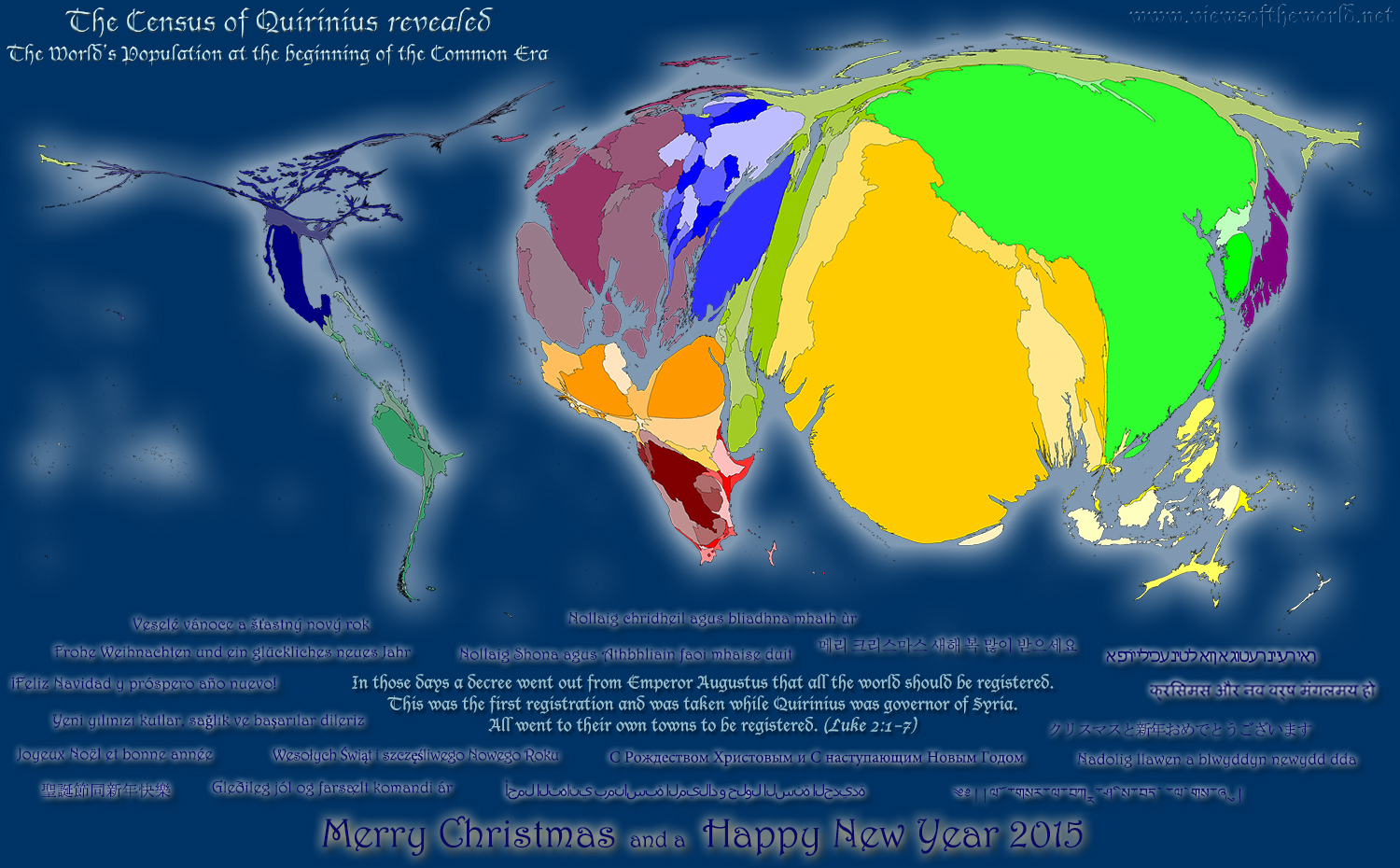The first two chapters of the Gospel of Luke in the Bible state that the birth of Jesus took place at the time of the census: “In those days a decree went out from Emperor Augustus that all the world should be registered. This was the first registration and was taken while Quirinius was governor of Syria. All went to their own towns to be registered.”
Believing in the religious background of the nativity story or not, evidence for the Census of Quirinius following Caesar Augustus’ decree exists beyond the bible. However, despite all recent initiatives to open up public data, the Census results of back then have not seen the light of day…until now!
This Christmas we can reveal the results of the Census of Quirinius following a freedom of information request to the Roman Empire (well, and following some more in-depth analysis within the Worldmapper project using Angus Maddisons studies). This is how the world looked in the year 1 CE (3761 Hebrew calendar, 7.17.18.13.3 Mayan calendar, 544 Buddhist calendar):
Wishing everyone a happy new year!



